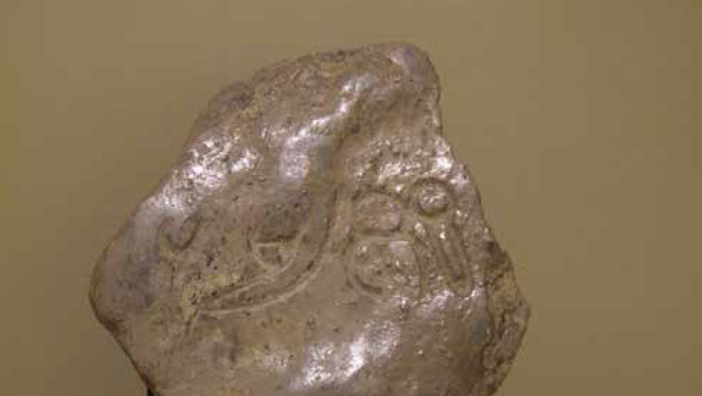
ปุษยคิริ : เขาศักดิ์สิทธิ์ของเมืองอู่ทองที่ถูกลืมเลือน
PUSYAGIRI: THE SACRED MOUNTAIN OF MUANG U-THONG
โดย รุ่งโรจน์ ภิรมย์อนุกูล / By Rungrot Phiromanukun
Damrong Journal, Vol 13, No.1, 2014
บทคัดย่อ:
จารึกปุษยคิริเป็นจารึกที่มีอายุอยู่ในราวช่วง พ.ศ. 1300–1400 โดยประมาณ ปัจจุบันจัดแสดงอยู่ในพิพิธภัณฑสถานแห่งชาติอู่ทอง จารึกหลักนี้มีข้อความสั้น คือ ปุษยคิริ มีความหมายว่า เขาปุษยะ ซึ่งในเทพนิยายของศาสนาพราหมณ์กล่าวว่า ปุษยคิริ เป็นสวนของพระวรุณ แต่อย่างไรก็ตามในชมพูทวีปก็ปรากฏนาม “เขาปุษยคิริ” ว่าเป็นภูเขาศักดิ์สิทธิ์ 2 แห่ง คือ
1. ในเมืองนาคารชุนโกณฑะ อานธรประเทศ
2. ในรัฐโอริสสา
จากหลักฐานหลายชิ้นชี้ชัดว่า จารึกปุษยคิริ พบที่เมืองโบราณอู่ทอง ดังนั้น “เขาปุษยคิริ” ก็ต้องอยู่ในบริเวณอู่ทอง ซึ่งผู้เขียนตีความว่า เป็นแนวเขาทำเทียม เพราะเป็นแนวเขาขนาดใหญ่ที่ใกล้เมืองอู่ทองมากที่สุด และในพื้นที่ของเขาทำเทียมพบโบราณสถานสำคัญในสมัยทวารวดีหลายแห่ง รวมกับมีการขุดค้นพบโบราณวัตถุเป็นจำนวนมากในพื้นที่แถบนี้
สาเหตุที่ทำให้แนวเขาทำเทียมเป็นเขาศักดิ์สิทธิ์ของเมืองอู่ทอง เพราะ
1. เป็นภูเขาที่เด่นสง่าก็ได้ถูกนำมาใช้เพื่อให้เป็นหลักหมาย (Landmark)เพื่อให้เดินทาง
2. ความเชื่อของผู้คนในอดีต ผีที่ศักดิ์สิทธิ์หรือผีผู้ใหญ่จะต้องอยู่ที่ภูเขา ซึ่ง เป็นความเชื่อที่พบในดินแดนอุษาคเนย์
แม้ว่าในช่วงระยะเวลาหลังปี พ.ศ. 1500 เมืองโบราณอู่ทองจะได้ลดบทบาทลง แต่แนวเขาทำเทียมก็ยังเป็นแนวเขาศักดิ์สิทธิ์อยู่ ดังปรากฏหลักฐานเจดีย์ทรงระฆังที่สามารถเทียบเคียงรูปแบบได้กับเจดีย์รายในวัดพระศรีสรรเพชญ์พระนครศรีอยุธยา จึงพอที่จะกำหนดอายุเจดีย์องค์นี้ว่าอยู่ในช่วงครึ่งหลังพุทธศตวรรษที่ 21 เราไม่สามารถที่จะทราบได้ว่าผู้คนได้ลืมเลือนว่าแนวเขาทำเทียมเป็นเขาศักดิ์สิทธิ์ตั้งแต่เมื่อไหร่ แต่อย่างน้อยก็ควรอยู่ในช่วงต้นรัตนโกสินทร์เป็นอย่างช้า
ABSTRACT:
The Pusyagiri Inscription can be dated to around the 8th - 9th century and is currently displayed at the U-thong National Museum. The inscription is a short message or “Pusyagiri” referring to the “Pusya” mountain in a Brahmanist tale which explains that the Pusyagiri is the garden of Varuna. However, in the Jambudvipa, the “Pusyagiri” refers to 3 holy mountains
As suggested by multiple pieces of evidence, it can be inferred that the Pusyagiri Inscription found at Muang (City) U-thong is the Pusyagiri (Hill) from U-thong. The evidence also shows that the Pusyagiri can refer to a large imitative mountain which is similar to Muang U-thong. In addition, within the area, there are many important Dvaravati sites and an immense amount of artifacts and evidence from archaeological excavations in this area. The causes and reasons that lead us to believe that the imitative mountain is the holy hill of Muang U-thong are:
1. The mountain was reproduced very well in order to represent a landmark for people to reach.
2. According to ancient beliefs, guardian spirits dwelled in the mountains or the hills which is a common local belief in Southeast Asia.
Despite the fact that Muang U-thong lost its significance after the 10th century, the hill was still considered holy according to the base of a bell shaped stupa which is related to the surrounding stupas in Wat Phra Si Sanphet in Phra Nakhon Si Ayutthaya dating back to around the 16th century. It is unclear when the imitative hill was abandoned but it can be assumed that the hill was abandoned in at least the early Rattanakosin period.











